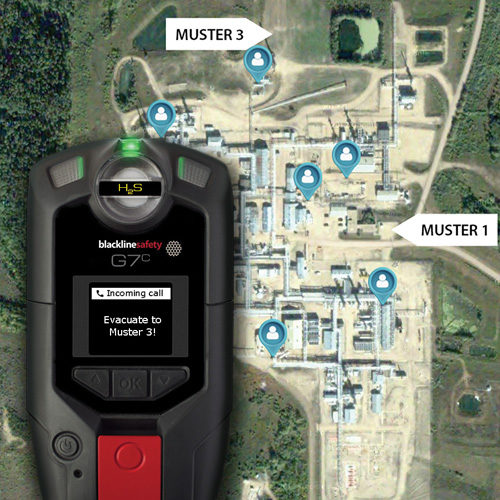Evacuating workers in an emergency situation
What is possible regarding evacuation management using connected safety technology?

Responding is Kirk Johnson, product manager, Blackline Safety, Calgary, Alberta, Canada.
Safely and quickly evacuating employees from facilities is a significant challenge for many businesses. New connected safety technology can have a dramatic impact on evacuation management by quickly discovering an incident and accounting for every employee along the way. Should a search crew be required, their risk is minimized by knowing where to retrieve an employee in need of help while having awareness of potential environmental exposure.
Evacuations start with the need to get teams out of a facility immediately. For example, an employee may discover a process failure, a control panel alarm light may turn on or a planned drill is about to be initiated. If an incident goes unnoticed because of other activities or lack of situational awareness, valuable response time is lost.
Triggering an evacuation often involves radio calls, a site-wide alarm system with strobes and PA speakers, or finding each employee in person. Once an evacuation is underway, employees are often accounted for at safe locations using manual checklists or collected employee tags. With manual processes like this, you may not know if an employee is left behind and needs help until it’s too late. It’s easy to see room for technological improvements.
With the emergence of employee-worn connected safety devices, it’s possible to see every worker’s location and communicate with them in any circumstance. These solutions can automatically detect incidents, from gas exposures to an injury or health event where the employee is motionless. When needed, employees can also call for help manually. These wirelessly communicated alerts provide real-time situational awareness to help assess whether an evacuation should be initiated.
Live-monitoring personnel receive every alert through a cloud-hosted monitoring portal. Each situation is managed efficiently with live data from every employee on the jobsite. Should an evacuation be triggered, employee-worn devices alert users with a visual and audible alarm, coupled with two-way voice instruction and text messaging. Employees acknowledge the evacuation request and evacuate immediately.
Connected safety technology doesn’t rely on facility power systems or communication infrastructure such as Wi-Fi. Each device operates independently, communicating via cellular or satellite wireless links. Monitoring personnel keep an eye on evacuation progress using a live map from any computer or mobile device with an internet connection. Employees left behind can be precisely located, contacted and rescued if need be – all while personnel know whether responders face environmental risks such as gas leaks or other hazard.
Not only do these advancements make evacuations more efficient and accountable with real-time situational awareness, but they make for a safer work environment because businesses can respond to any situation beyond evacuations, best utilizing onsite personnel. Connected safety also offers proactive awareness to help address issues before they become larger problems. For example, every gas reading and location is recorded, enabling persistent gas leaks to be discovered and fixed.
Businesses should consider their evacuation and emergency response protocols and the value of connected safety technology. Investing in such technology is often offset through operational efficiencies while greatly improving the safety infrastructure for all personnel.
Editor's note: This article represents the independent views of the author and should not be construed as a National Safety Council endorsement.
Post a comment to this article
Safety+Health welcomes comments that promote respectful dialogue. Please stay on topic. Comments that contain personal attacks, profanity or abusive language – or those aggressively promoting products or services – will be removed. We reserve the right to determine which comments violate our comment policy. (Anonymous comments are welcome; merely skip the “name” field in the comment box. An email address is required but will not be included with your comment.)

